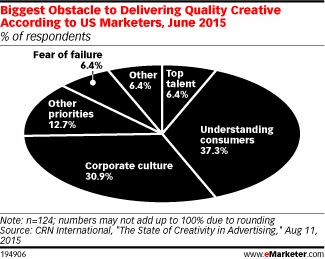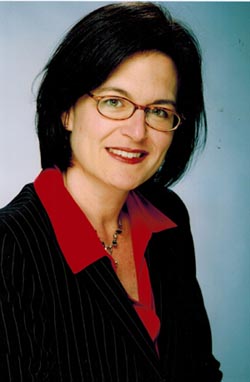The [a]list daily Video Summit has drawn to a close, but it went out with a bang as the final panel of the day covered the partnership between influencers and brand soul mates as it were. The star-studded panel included RocketJump (and Video Game High School production house) creative director Mike Symonds, self-appointed King of Music Video Parodies Bart Baker, The Game Theorists creator Matthew Patrick, #1 Twitch Streamer Tom Cassell (the first to reach two million on the streaming network), and actress and producer Olga Kay, moderated by talent group director for ION, Steven Lai.
After quick introductions, the panel turned to storytelling, where each of the participants discussed how they approach it, since they all do it differently. Symonds noted that while a familiar model was followed, creativity was found, especially when it came to doing so within an allotted budget. Rocketjump bypasses the usual digital film circles, instead just presenting it online in a short format. They still make it work within a traditional format, even as shorts. He also mentioned RocketJump s film school, devoted to the format.
Patrick spoke next, talking about finding the little details in the creative process. A lot of research and effort go into those works, so he finds that they can pay off when it gets implanted into videos, where they re usually overlooked otherwise. Twisting around the story can play a part as well (similar to what Microsoft is doing with Halo 5: Guardians). What if Mario is evil he asked, pointing out what evidence could tie into that. Meta-stories can emerge from the lore as a result, and he s excited about it because it changes around familiar IP, creating a new appreciation and perspective in the process. What is the value proposition for the fan he asked, wondering what they would learn from the videos. Delivering upon what already exists is a different way to look at it.
Kay then took the mic, saying that knowing the audience and brands really well pays off. As a result, the creative process becomes simple. It just becomes this synergy, easier to delivering to your audience, she said.
The process for a parody is two weeks, said Baker. We will watch it millions of times, and then we have to pick apart as much as we can and find whatever we can to make fun of another video that we think an audience would find humorous. Digging through this, while timely, can pay off with a built storyline, straight from user s commentary. This creates an interaction unlike most video content available for viewing.
Cassell simply said, I play video games, and while not as in-depth as what the others provide, he talked about challenges with YouTube and trying to overtake certain parts of the industry. He follows an easy routine, playing games and uploading, and millions of people watch it.
The topic then turned to the approach to high audience numbers. Cassell stated he took a big step with Twitch, and simply gave it a go to bring his audience over from YouTube. It s a pretty daunting task to ask them to switch platforms, but they managed to do it. One day, he managed to hit 121,000 users concurrent, just by playing the popular Minecraft. Transition definitely played a key part. He also noted raising awareness through social media channels.
Up next was Baker, he noted that he started using Snapchat and Vine, since he s friends will all the big Viners . He began posting regularly, and he s risen 120,000 users in three to four weeks time (thanks to his following). Snapchat is just a beast, he notes, saying he gets three millions opens daily. They literally are the most engaged audience.
Kay noted that staying on top of all the networks is a smart idea, as she recently experimented with Snapchat and Twitter s live-streaming Periscope service. She s only been on for a month, and already has a brand deal with Nestle as a result. You never know what s going to take off, she said, regarding experimenting with networks. Some are created more for businesses than creators, but there s still that one-on-one engagement that can pay off. She said there s a psychological effect to opening things by pressing a button on a device, particularly with Snapchat. With Snapchat, I have to be there, and that s why they re mostly successful, she said.
Patrick explained that it s confusing to be in today s media landscape. You don t know what s going to take off, or what you should be measuring, he explained. While Facebook is touting billions of views, they re mostly generated through auto-scrolling through a view on their webpage. The metrics can be completely different, which can be a challenge for brands. He also stated that they shouldn t be everywhere, as they can work in different mediums, such as Vine (with short and snappy advertising). Video game companies thrive on YouTube as well. Pipelines and revenue sources aren t available to join all the networks, either. Developing a strong audience on one platform seems to be a specialty for most, especially with the strong delivery available on YouTube. As for which platform fits what brands, he suggests asking for the brand preposition.
Kay returned to the mic to counter, stating it never hurts to open an account just so you claim the space .
Symonds brought up film school, and the tools necessary to complete it. Specializing in an audience that buys and engages in video content is in the same ecosystem, he explained.
Cassell mentioned there s an overload of social networks available, but he decides by seeing which ones are the most viable with what he has to offer.
Relationship with audience and engagement can make a difference as well, as Lai explained. Cassell once again spoke, telling a story regarding how he grew up and developed (over the past five years), and became able to build his own company, as well as a home. The audience has shared these moments with him, even connecting with him following a personal loss of a family member.
Baker says his channel is different with music video parodies, where he didn t really address the audience beforehand. However, with N-Slate content, he played more of a part in that, sharing links and such. That s when he rose from 100,000 to a million in a matter of months, due to that personal connection. Snapchat has that kind of personal connection as well, in spite of being temporary. It shows more of your personal side.
Kay said it s the same for all of us, but with all the companies and brands that start YouTube channels, they take the idea of traditional marketing and it doesn t really work, due to the lack of a connection. One-on-one conversation is what most of the audience was established on, and bringing in personalities can help brands connect better to said audience.
Patrick wondered how to match the success of others in the YouTube circles, like Michelle Phan. It s about relating to the audience with an organic connection. There s a passion to it, right he said. He brought up PewDiePie and how some folks couldn t connect to it, but he has a language with his audience that completely relates to them, and not necessarily outsiders. As a result, that s a more genuine reason for his popularity. The question between someone between amateur and professional YouTubers is brought up, but Patrick assures that PewDiePie is a professional at what he does, and his earnings, controversial as they may seem, show that. Overcoming that hurdle and getting that personal connection, high production values or not, is something that brands need to do.
Kay also brought up marketing, with attention being paid to brands. Some people don t have TV and couldn t name shows, and that the future generation will be growing with YouTube personalities, like PewDiePie. Both traditional and digital media should be concentrated on, even as the older generation dies off, as Kay puts it.
Symonds said the intent with trying to reach out to an audience remains the same, and brought up Steven Spielberg s Jaws as an influential idea. Finding the right balance with both the audience and the brands, particularly with mood ( Don t piss people off ) is vital as well, and communicating what RocketJump wants to do with their content. Getting everyone on the same page to understand this cool video is a key ingredient. That s really what we strive for at the end of the day, he said.
Cassell then brought up someone that tried to promote a snack that he was asked to promote. Natural brand integration was suggested, where he doesn t need to do some sort of awkward pitch. He enjoyed doing it, and the audience got a kick out of it as well, rather than groaning at the content. Working with brands pays off as well, rather than just being told flatly what to do, without any involvement from the talent.
Baker talked about an app he launched called Challenge, featuring ideal integration without hitting users over the head with sponsorship. It s generated a strong audience as a result, while at the same time getting word out around the bands. Offering a prize helps as well, like getting Bose s name out there by offering a headset for a giveaway.

 Julie Borchard-Young
Julie Borchard-Young
